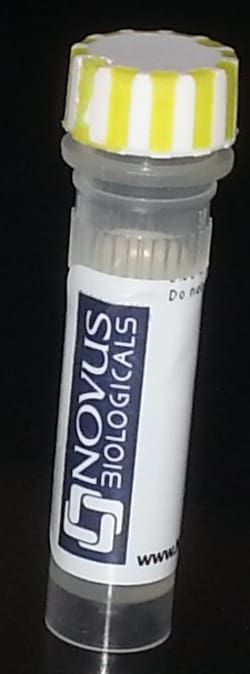CD5 Antibody (CD5/54/F6), Alexa Fluor™ 532, Novus Biologicals™
Manufacturer: Novus Biologicals
Select a Size
| Pack Size | SKU | Availability | Price |
|---|---|---|---|
| Each of 1 | NP23493A32-Each-of-1 | In Stock | ₹ 58,562.00 |
NP23493A32 - Each of 1
In Stock
Quantity
1
Base Price: ₹ 58,562.00
GST (18%): ₹ 10,541.16
Total Price: ₹ 69,103.16
Antigen
CD5
Classification
Monoclonal
Conjugate
Alexa Fluor 532
Formulation
50 mM sodium borate with 0.05% sodium azide
Gene Symbols
CD5
Immunogen
Recombinant fragment (around aa450-495) of human CD5 protein (intracellular region). (Uniprot: P06127 )
Quantity
0.1 mL
Gene ID (Entrez)
921
Target Species
Human, Rat, Porcine, Bovine, Canine, Chicken, Equine, Guinea Pig, Monkey, Rabbit
Isotype
IgG1 κ
Applications
Western Blot, Flow Cytometry, ELISA, Immunohistochemistry, Immunocytochemistry, Immunofluorescence, Immunohistochemistry (Paraffin)
Clone
CD5/54/F6
Dilution
Western Blot, Flow Cytometry, ELISA, Immunohistochemistry, Immunocytochemistry/Immunofluorescence, Immunohistochemistry-Paraffin, Immunohistochemistry-Frozen
Gene Alias
CD5 antigen, CD5 antigen (p56-62), CD5 molecule, LEU1T-cell surface glycoprotein CD5, Lymphocyte antigen T1/Leu-1, T1
Host Species
Mouse
Purification Method
Protein A or G purified
Primary or Secondary
Primary
Test Specificity
Recognizes a 67kDa transmembrane protein, which is identified as CD5. The CD5 antigen is found on 95% of thymocytes and 72% of peripheral blood lymphocytes. In lymph nodes, the main reactivity is observed in T cell areas. Anti-CD5 is a pan T-cell marker that also reacts with a range of neoplastic B-cells, e.g. chronic lymphocytic leukemia/small lymphocytic lymphoma (CLL/SLL), mantle cell lymphoma, and a subset (∼10%) of diffuse large B-cell lymphoma. CD5 aberrant expression is useful in making a diagnosis of mature T-cell neoplasms. Anti-CD5 detection is diagnostic in CLL/SLL within a panel of other B-cell markers, especially one that includes anti-CD23. Anti-CD5 is also very useful in differentiating among mature small lymphoid cell malignancies. In addition, anti-CD5 can be used in distinguishing thymic carcinoma (+) from thymoma (-). Anti-CD5 does not react with granulocytes or monocytes.
Content And Storage
Store at 4°C in the dark.
Description
- CD5 Monoclonal specifically detects CD5 in Human, Rat, Porcine, Bovine, Chicken, Equine, Guinea Pig, Monkey, Rabbit samples
- It is validated for Flow Cytometry, Immunohistochemistry, Immunohistochemistry-Paraffin.
